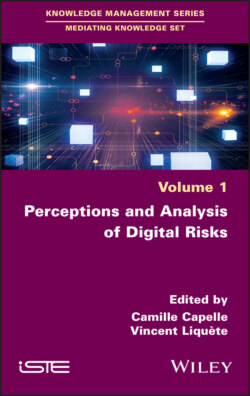Читать книгу Perceptions and Analysis of Digital Risks - Группа авторов - Страница 29
1.4.1. When perceptions of risk inhibit any practice
ОглавлениеCertain perceptions of digital risks seem to be an obstacle. The use of digital practices with students is perceived by some as a problem factor, especially in their relationships with their parents. A schoolteacher explains his reluctance to have his students work on the Internet to us:
I’m not convinced of the parents’ response and I’m afraid of being annoyed, frankly, by the parents’ response. So, I’ve never used it and so, yes, that’s it (schoolteacher, 41 years old).
In secondary education, the use of social media platforms (including YouTube, social networks or blogs) is largely avoided, even though they constitute an important angle of media and information literacy. One schoolteacher expresses her difficulties in considering solutions for covering media and information literacy with her students:
It’s true that it’s very, very regulated, so, uh, even the blog, we’re not going to use just any blog, so it’s the academic blog and we’re obliged, it’s very formalized. So, it’s true that I know that it can be a hindrance, yes (fourth-grade schoolteacher, 25 years old).
This avoidance is dependent on their risk perception and on a kind of ethical principle that they apply to themselves as well as to the students:
I can’t get into it, first of all because I was probably reluctant to it, and the dangers it can bring. I saw when I was working in secondary school, we saw students’ Facebooks and what they put on them, and it’s unbelievable… So, for me, it’s more of a danger than a tool, in fact (teacher in pre-kindergarten, 44 years old).
An English teacher who is committed to educating students digitally explains:
There are many teachers for whom using digital networks, even Twitter, is too scary (English teacher in a high school, 25 years old).
Social networks are indeed perceived as spaces that must remain totally inaccessible at school, associated with “dangerous sites” and treated in schools, according to teachers, on the same level as “pornographic sites”:
When they go on the Internet, there are a lot of filters that prevent them from accessing a certain number of so-called dangerous sites. I don’t know how to talk about it... well, I don’t know how to talk to the students about these... risks, I mean. In fact, when they go on the Internet at school, they don’t have access to social networks, pornographic sites, sites… I don’t know, maybe dangerous sites, or so-called dangerous sites, in the educational world (art teacher in a high school, 29 years old).
We also see that the risks evoked for students are strongly influenced by their personal experience and the concerns they may have for themselves, such as here, on social networks:
But the problem with social networks is that they are very... it’s a bit of a vent for everyone and I don’t really like that system (management teacher in a senior high school, 39 years old).
These concerns crystallize around the use of social networks and the information disseminated or used on the Web. They are first projected onto the students, as expressed by this English teacher:
I just think that there is no limit in fact with the digital environment among students... and it goes over our heads. It goes over our heads, their heads and the parents’ heads, over everyone’s and uh... at the same time it’s addictive for them so... it’s addictive and it’s destructive at the same time and it’s risky, too. That’s why it’s really worrying (English teacher in a high school, age 25).
The cell phone is also a subject that gives rise to debate and apprehension within schools. Its prohibition in schools and colleges, apart from educational uses, has undoubtedly reinforced certain apprehensions among teachers, as expressed by this high school teacher:
Digital technology, for me, is something... I don’t know how far it can go. That is to say that... if I do a class with students, for example, and I ask them, which won’t happen, to use their cell phones, so there are 24 students or 28 students, since these are classes of 24 or 28, if I find myself with two, three students using their phones for purposes other than pedagogical purposes... not only will I not have the means to block them, I’ll have no way of knowing where it went, how it was broadcast or anything. Or what was broadcast. I won’t know until later, or by word of mouth. So that’s it, really, the fear of that. The fear of being filmed without one’s knowledge, the fear of that being sent on the Internet, on any type of social network it can be posted on and not having control over this post (aeronautics teacher in a high school, age 55).
The feeling of losing control over certain misuses by students is clearly an obstacle to digital literacy. Teachers feel that digital practices put them at risk and cannot work out how to avoid these misuses or educate students on responsible use.
Through testimonies, we can experience the complexity of this subject, the impact of depictions of digital risks and the role they play on emotions: fear of wrongdoing, fear of not knowing how to teach digital literacy, fear of generating problems for students or of encountering problems with students themselves.
